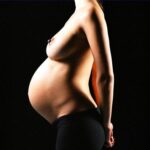 Researchers at the Center for Integrative Medicine, at the University of Maryland, in Baltimore, reviewed the effects of acupuncture on pregnancy success rates when added to in vitro fertilization.
Researchers at the Center for Integrative Medicine, at the University of Maryland, in Baltimore, reviewed the effects of acupuncture on pregnancy success rates when added to in vitro fertilization.
First, the details.
- 16 studies (4021 participants) were included in the meta-analyses.
- Each compared needle acupuncture administered within 1 day of embryo transfer vs sham acupuncture or no treatment.
- The primary outcome was clinical pregnancy rates.
And, the results.
- There was no difference between acupuncture and controls when combining all studies or when comparison was made to sham-controlled studies only.
- In studies that reported a significant effect of acupuncture, differences between treatments were based mostly on the rate of pregnancy in the control group, not the pregnancy rate in the acupuncture group.
- Studies with lower control group rates of clinical pregnancy were more likely to report benefit from acupuncture than studies with higher control group rates of clinical pregnancy.
- Studies with fewer patients were more likely to report benefit with acupuncture.
The bottom line?
The authors concluded, “We found no pooled benefit of adjuvant acupuncture for in vitro fertilization.”
In 2008, researchers at Guy’s and St Thomas’ Hospital, in London, came to the same conclusion.
On the other hand, researchers at Huazhong University of Science and Technology, in Wuhan, People’s Republic of China, concluded, “Positive effects from using acupuncture in in vitro fertilization can be expected if an appropriate control and more reasonable acupuncture programs are used.” In addition to clinical pregnancy rate, their review reported significantly higher live birth rates.
They caution however, that using a Streitberger control may not be an inactive procedure — again raising the issue of whether it’s possible to make reliable comparisons between real and “sham” acupuncture.
The Streitberger placebo-needle was developed by Dr. med. Konrad Streitberger. It is described here and here.
7/3/13 19:29 JR